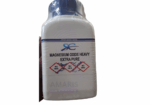
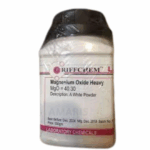
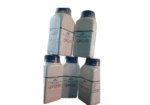
Magnesium Oxide Heavy Extra Pure
$ 18.00 Original price was: $ 18.00.$ 17.87Current price is: $ 17.87.
Magnesium Oxide Heavy Extra Pure is a high-purity, dense white powder prized for its excellent thermal stability, high melting point, and chemical inertness. It is widely used in laboratory applications as a standard reagent, pH adjuster, and desiccant. In pharmaceuticals, it functions as an antacid and a magnesium supplement, while in industrial processes, it is essential for producing refractory materials, ceramics, and insulating products due to its high heat resistance. The “heavy” form refers to its higher bulk density, making it particularly useful in applications where volume constraints are critical. Its extra pure grade ensures it meets the stringent demands of high-precision research and formulation work.
Magnesium Oxide Heavy Extra Pure
Primary Uses
- Acid Neutralization:
- Commonly used as a strong base or neutralizing agent in acid-base titrations and pH adjustment.
- Thermal Analysis Studies:
- Serves as a refractory material in high-temperature calcination or thermal decomposition experiments.
- Precursor in Inorganic Synthesis:
- Acts as a starting material for preparing other magnesium compounds in laboratory reactions.
Secondary Uses
- Standard for Gravimetric Analysis:
- Used to form insoluble precipitates for determining elemental composition via gravimetric methods.
- Material Science Experiments:
- Employed in ceramic and glass formulation studies due to its thermal stability and basicity.
- Absorbent/Desiccant:
- Occasionally used as a moisture absorber in experiments requiring dry conditions.
| PACK SIZE |
500 grams Plastic Tin |
|---|
1. Basic Identification Attributes
- Chemical Name: Magnesium Oxide (Heavy)
- Synonyms: Magnesia; Calcined magnesia
- CAS Number: 1309-48-4
- Molecular Formula: MgO
- Molecular Weight: 40.30 g/mol
- Appearance: White, heavy powder
- Odor: Odorless
- Solubility: Insoluble in water; soluble in acids
- Grade: Extra Pure
2. Safety & Hazard Attributes
- GHS Classification:
- Not classified as hazardous under GHS for general laboratory use
- Hazard Statements:
- May cause mechanical irritation to eyes, skin, and respiratory tract due to dust
- Precautionary Statements:
- P261: Avoid breathing dust
- P280: Wear protective gloves/eye protection
- P305+P351+P338: If in eyes, rinse cautiously with water for several minutes
- Personal Protective Equipment (PPE):
- Lab coat
- Dust mask or respirator (if dust is generated)
- Safety goggles
- Nitrile or latex gloves
- First Aid Measures:
- Inhalation: Move to fresh air; seek medical attention if symptoms persist
- Skin Contact: Wash with soap and water
- Eye Contact: Flush with water for 15 minutes; seek medical attention if irritation occurs
- Ingestion: Rinse mouth; seek medical help if large quantities are swallowed
- Fire Hazards:
- Non-flammable
- Use water spray, dry chemical, or foam in case of fire involving surrounding materials
3. Storage & Handling Attributes
- Storage Conditions:
- Store in a cool, dry place
- Keep container tightly closed
- Avoid contact with acids and moisture
- Handling Tips:
- Handle in well-ventilated area
- Avoid generating dust
- Use non-sparking tools and minimize physical impact to avoid airborne particles
4. Laboratory Applications
- Primary Uses:
- Refractory material for high-temperature crucibles and furnace insulation
- Acid neutralizing agent in chemical and pharmaceutical applications
- Buffer component in pH control in lab studies
- Secondary Uses:
- Filler or bulking agent in formulation studies
- Substrate or catalyst support in thermal and catalytic experiments
- Standard for gravimetric analysis involving magnesium salts
SAFETY PRECAUTIONS
Personal Protective Equipment (PPE):
- Wear a lab coat, nitrile gloves, and chemical safety goggles.
- Use a dust mask or operate in a fume hood to avoid inhalation of fine particulates.
Handling:
- Avoid contact with skin, eyes, and clothing.
- Prevent formation and inhalation of dust.
- Wash hands thoroughly after handling.
Storage:
- Store in a cool, dry, and well-ventilated area.
- Keep the container tightly closed and away from moisture and incompatible substances such as strong acids.
FIRST AID MEASURES
Inhalation:
- Remove the person to fresh air.
- Seek medical attention if symptoms such as coughing or respiratory irritation persist.
Skin Contact:
- Wash with soap and water.
- Remove contaminated clothing.
- Get medical attention if irritation develops.
Eye Contact:
- Rinse cautiously with water for several minutes.
- Remove contact lenses if present and easy to do.
- Continue rinsing and seek medical advice if irritation continues.
Ingestion:
- Rinse mouth with water.
- Do not induce vomiting.
- Seek medical assistance if discomfort occurs.
FIRE FIGHTING MEASURES
Flammability:
- Non-flammable under normal conditions.
Extinguishing Media:
- Use appropriate media for surrounding fire: water spray, dry chemical, foam, or CO₂.
Hazardous Combustion Products:
- May produce magnesium oxides under extreme fire conditions.
Firefighter Protection:
- Wear self-contained breathing apparatus (SCBA) and protective gear when fighting large fires involving the substance.


 Preservatives(food)
Preservatives(food) Flavor Enhancers
Flavor Enhancers Acidulants
Acidulants Sweeteners
Sweeteners Antioxidants
Antioxidants Colorants(food)
Colorants(food) Nutraceutical Ingredients (food)
Nutraceutical Ingredients (food) Nutrient Supplements
Nutrient Supplements Emulsifiers
Emulsifiers
 Collectors
Collectors Dust Suppressants
Dust Suppressants Explosives and Blasting Agents
Explosives and Blasting Agents Flocculants and Coagulants
Flocculants and Coagulants Frothers
Frothers Leaching Agents
Leaching Agents pH Modifiers
pH Modifiers Precious Metal Extraction Agents
Precious Metal Extraction Agents
 Antioxidants(plastic)
Antioxidants(plastic) Colorants (Pigments, Dyes)
Colorants (Pigments, Dyes) Fillers and Reinforcements
Fillers and Reinforcements Flame Retardants
Flame Retardants Monomers
Monomers Plasticizers
Plasticizers Polymerization Initiators
Polymerization Initiators Stabilizers (UV, Heat)
Stabilizers (UV, Heat)
 Antifoaming Agents
Antifoaming Agents Chelating Agents
Chelating Agents Coagulants and Flocculants
Coagulants and Flocculants Corrosion Inhibitors
Corrosion Inhibitors Disinfectants and Biocides
Disinfectants and Biocides Oxidizing Agents
Oxidizing Agents pH Adjusters
pH Adjusters Scale Inhibitors( water)
Scale Inhibitors( water)
 Antioxidants(cosmetic)
Antioxidants(cosmetic) Emollients
Emollients Fragrances and Essential Oils
Fragrances and Essential Oils Humectants
Humectants Preservatives
Preservatives Surfactants(cosmetic)
Surfactants(cosmetic) Thickeners
Thickeners UV Filters
UV Filters
 Fertilizers
Fertilizers Soil Conditioners
Soil Conditioners Plant Growth Regulators
Plant Growth Regulators Animal Feed Additives
Animal Feed Additives Biostimulants
Biostimulants Pesticides (Herbicides, Insecticides, Fungicides)
Pesticides (Herbicides, Insecticides, Fungicides)
 Active Pharmaceutical Ingredients (APIs)
Active Pharmaceutical Ingredients (APIs) Excipients
Excipients Solvents(pharmaceutical)
Solvents(pharmaceutical) Antibiotics
Antibiotics Antiseptics and Disinfectants
Antiseptics and Disinfectants Vaccine Adjuvants
Vaccine Adjuvants Nutraceutical Ingredients (pharmaceutical)
Nutraceutical Ingredients (pharmaceutical) Analgesics & Antipyretics
Analgesics & Antipyretics
 Analytical Reagents
Analytical Reagents Solvents(lab)
Solvents(lab) Chromatography Chemicals
Chromatography Chemicals Spectroscopy Reagents
Spectroscopy Reagents microbiology-and-cell-culture-reagents
microbiology-and-cell-culture-reagents Molecular Biology Reagents
Molecular Biology Reagents Biochemical Reagents
Biochemical Reagents Inorganic and Organic Standards
Inorganic and Organic Standards Laboratory Safety Chemicals
Laboratory Safety Chemicals Specialty Laboratory Chemicals(Special Laboratory Equipment)
Specialty Laboratory Chemicals(Special Laboratory Equipment)
 Demulsifiers
Demulsifiers Hydraulic Fracturing Fluids
Hydraulic Fracturing Fluids Scale Inhibitors(oil)
Scale Inhibitors(oil) Surfactants(oil)
Surfactants(oil) Drilling Fluids
Drilling Fluids
 Dyes and Pigments
Dyes and Pigments Bleaching Agents
Bleaching Agents Softening Agents
Softening Agents Finishing Agents
Finishing Agents Antistatic Agents
Antistatic Agents
 Admixtures
Admixtures Waterproofing Agents
Waterproofing Agents Sealants and Adhesives
Sealants and Adhesives Curing Compounds
Curing Compounds Concrete Repair Chemicals
Concrete Repair Chemicals Anti-Corrosion Coatings
Anti-Corrosion Coatings
 Surfactants(cleaning)
Surfactants(cleaning) Builders
Builders Enzymes
Enzymes Solvents (Cleaning)
Solvents (Cleaning) Fragrances
Fragrances
 Electronic Chemicals
Electronic Chemicals Catalysts
Catalysts Lubricants
Lubricants Photographic Chemicals
Photographic Chemicals Refrigerants
Refrigerants Automotive chemicals
Automotive chemicals Pyrotechnic Chemicals
Pyrotechnic Chemicals
 Biodegradable Surfactants
Biodegradable Surfactants Bio-based Solvents
Bio-based Solvents Renewable Polymers
Renewable Polymers Carbon Capture Chemicals
Carbon Capture Chemicals Wastewater Treatment Chemicals
Wastewater Treatment Chemicals
 Pigments
Pigments Solvents(paint)
Solvents(paint) Specialty Coatings
Specialty Coatings Binders/Resins
Binders/Resins Additives
Additives Driers
Driers Anti-Corrosion Agents
Anti-Corrosion Agents Functional Coatings
Functional Coatings Application-Specific Coatings
Application-Specific Coatings
 Fresh Herbs
Fresh Herbs Ground Spices
Ground Spices Whole Spices
Whole Spices Spice Blends
Spice Blends Dried Herbs
Dried Herbs
 Leavening Agents
Leavening Agents Dough Conditioners
Dough Conditioners Flour Treatments
Flour Treatments Fat Replacers
Fat Replacers Decoratives
Decoratives Preservatives(baking)
Preservatives(baking)
 Plasticizers & Softeners
Plasticizers & Softeners Reinforcing Agents
Reinforcing Agents Adhesion Promoters
Adhesion Promoters Vulcanizing Agents
Vulcanizing Agents Antidegradants
Antidegradants Blowing Agents
Blowing Agents Fillers & Extenders
Fillers & Extenders Accelerators & Retarders
Accelerators & Retarders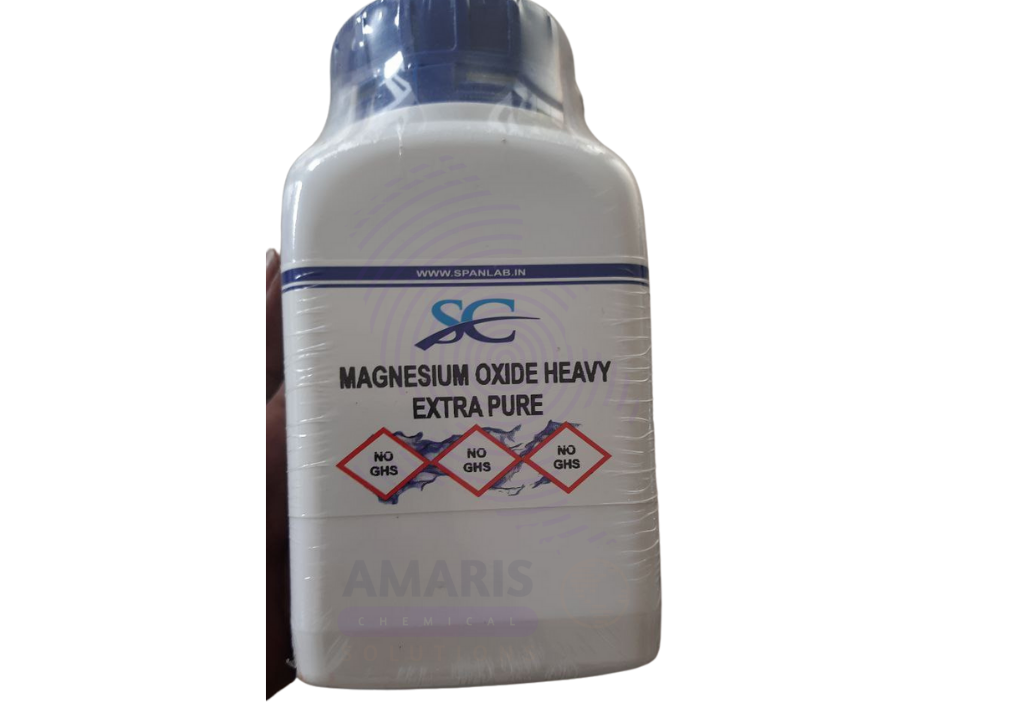

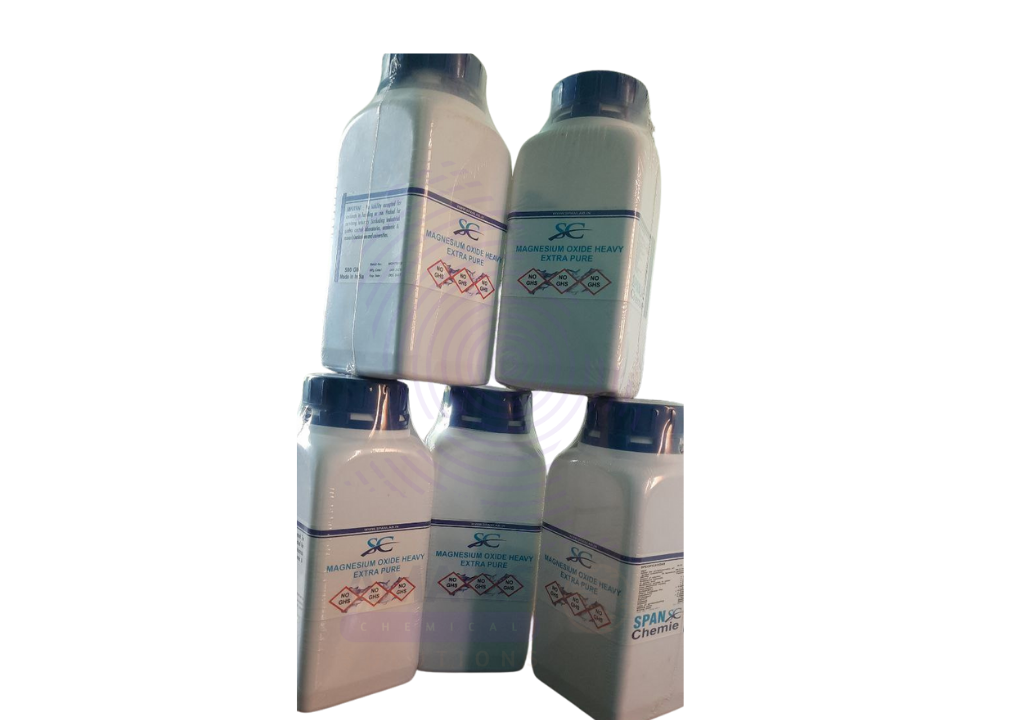
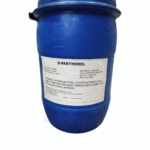
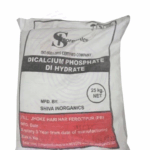

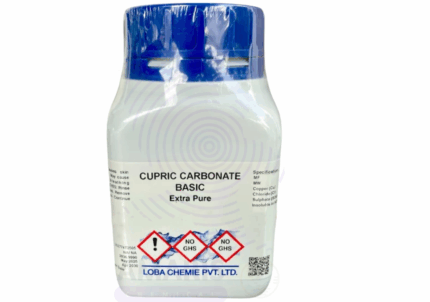
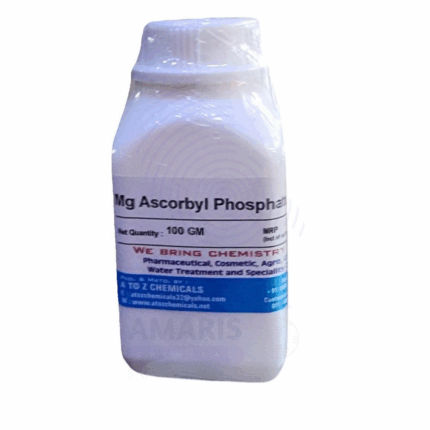
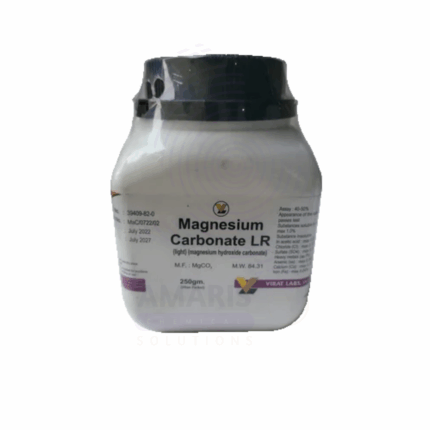
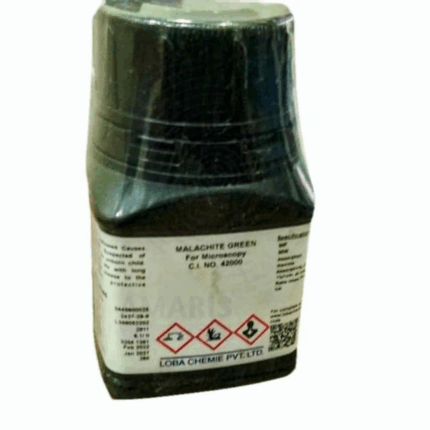
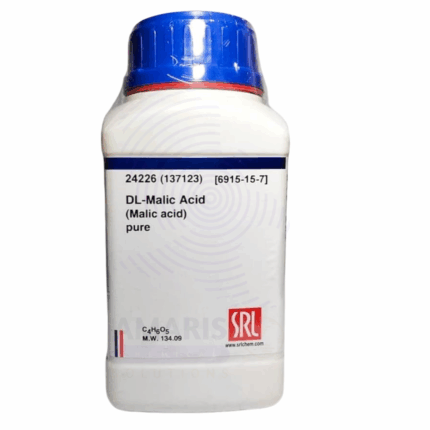
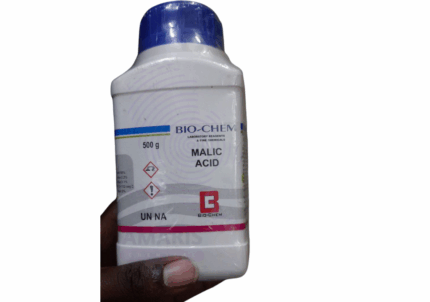
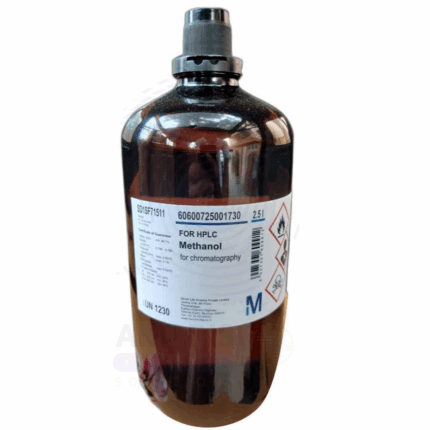
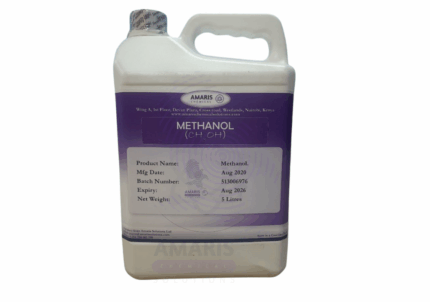
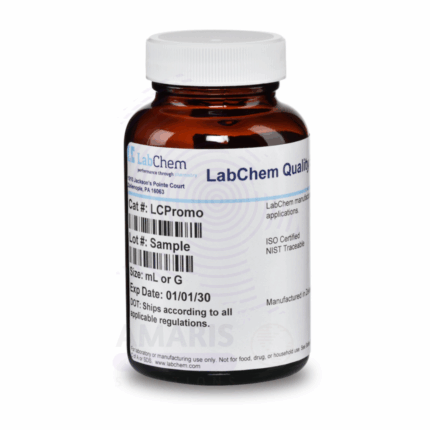
![Nickel Sulphate [NiSO4(H2O)6] Extra Pure Amaris Chemicals](https://amarischemicalsolutions.com/wp-content/uploads/2025/08/Nickel-Sulphate-NiSO4H2O6-Extra-Pure-Amaris-Chemicals-430x430.png)















